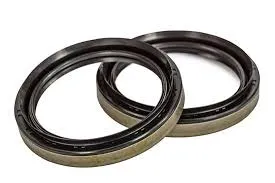10 月 . 10, 2024 14:17 Back to list
changing a valve cover gasket
Changing a Valve Cover Gasket A Step-by-Step Guide
Maintaining your vehicle's engine is crucial for optimal performance and longevity. One of the common maintenance tasks that car owners may encounter is changing the valve cover gasket. This component plays a critical role in sealing the area between the engine's cylinder head and the valve cover, preventing oil leaks and ensuring that the engine operates smoothly. If you notice oil leaking from the top of your engine or see a buildup of oil around the valve cover, it might be time to change the valve cover gasket. Below is a comprehensive guide to help you through the process.
Tools and Materials Required
Before starting the replacement process, gather the necessary tools and materials
- New valve cover gasket - Socket set (including ratchet and extension) - Torque wrench - Screwdrivers (flat-head and Phillips) - Valve cover gasket sealant (if recommended by the manufacturer) - Clean rag or paper towels - Engine degreaser - Oil (for topping off after the replacement)
Step 1 Preparation
1. Safety First Ensure you're working in a well-ventilated area. Wear safety glasses and gloves to protect yourself from potential hazards. 2. Gather Information Before proceeding, consult your vehicle’s service manual for specific instructions and torque specifications. Ensure that you have the right replacement gasket for your vehicle’s make and model.
Step 2 Remove Engine Components
1. Disconnect the Battery To prevent any electrical accidents, disconnect the negative terminal of the battery. 2. Remove Obstructions Depending on your vehicle, you may need to remove certain components to access the valve cover. This can include the air intake duct, throttle body, ignition coils, or wiring harnesses. Take note of where each component is attached so you can reassemble them later.
Step 3 Remove the Valve Cover
1. Unbolt the Valve Cover Using the appropriately sized socket and ratchet, carefully remove the bolts securing the valve cover. Keep track of the bolts and their respective locations.
2. Pry off the Valve Cover Gently tap the edges of the valve cover with a rubber mallet or carefully pry it off with a flat-head screwdriver. Be cautious not to damage the cover or its mounting surfaces.
Step 4 Clean the Surfaces
changing a valve cover gasket

1. Remove Old Gasket Material Examine the groove on the valve cover and engine block where the gasket sits. Use a scraper or a putty knife to remove any leftover gasket material. Be careful not to gouge the surfaces.
2. Clean the Area Spray the area with engine degreaser and wipe it clean with a rag. This helps ensure a proper seal with the new gasket.
Step 5 Install the New Gasket
1. Position the New Gasket Carefully place the new valve cover gasket in the groove of the valve cover. If a sealant is recommended, apply a thin bead to the edges of the gasket.
2. Reinstall the Valve Cover Align the valve cover back onto the engine and gently lower it into place. Make sure the gasket stays in position during this step.
Step 6 Bolt Everything Back Together
1. Torque the Bolts Reinsert the bolts and hand-tighten them first. Then, using the torque wrench, tighten them to the specifications noted in your vehicle’s service manual. This is usually done in a crisscross pattern to distribute pressure evenly.
2. Reinstall Components Reattach any components that were removed earlier, ensuring all connections are secure.
Step 7 Reconnect the Battery and Test
Reconnect the negative battery terminal. Start your engine and let it run for a few minutes while checking for any signs of leaks around the valve cover. If everything looks good, take your vehicle for a short drive, and then check again to ensure there are no oil leaks.
Conclusion
Changing a valve cover gasket is a manageable DIY task that can save you money and improve your engine’s performance. By following the steps outlined above and taking proper precautions, you can confidently tackle this maintenance job. Regular checks of your engine’s components can help you catch potential issues early, ensuring your vehicle remains in top condition for years to come.